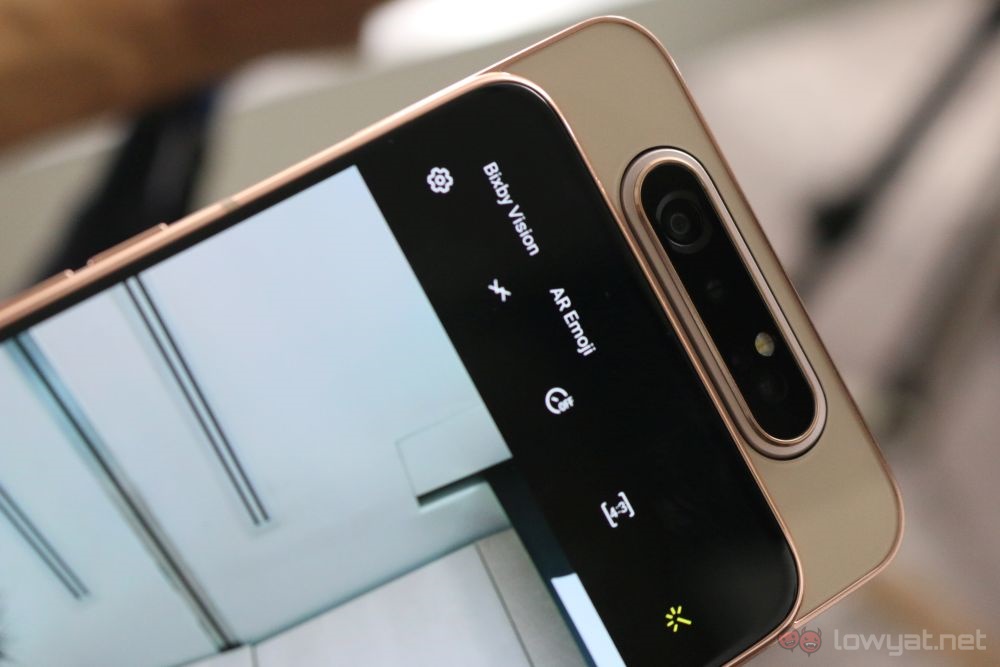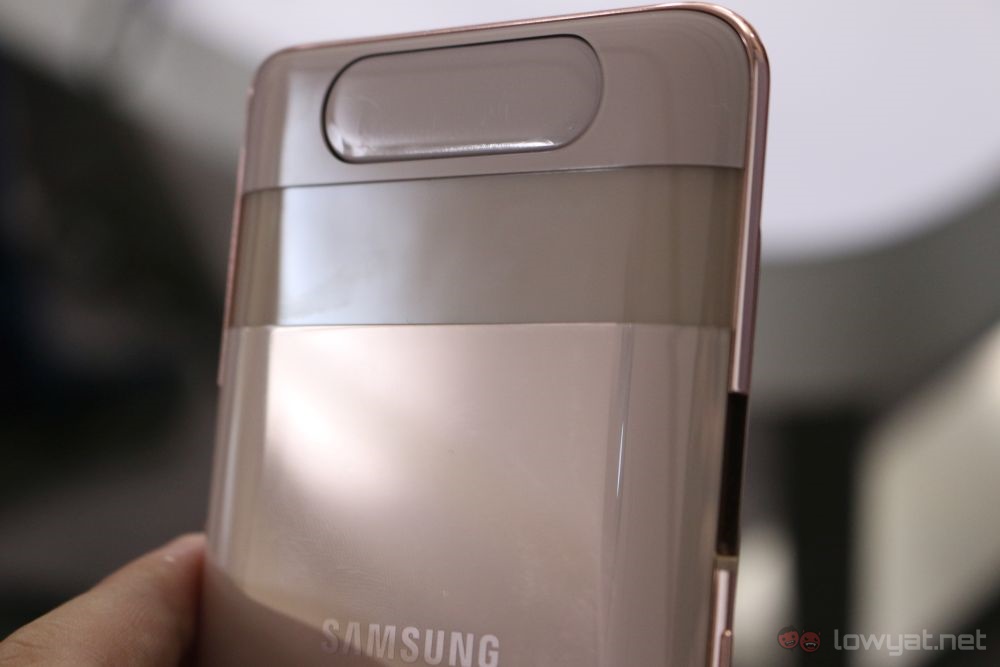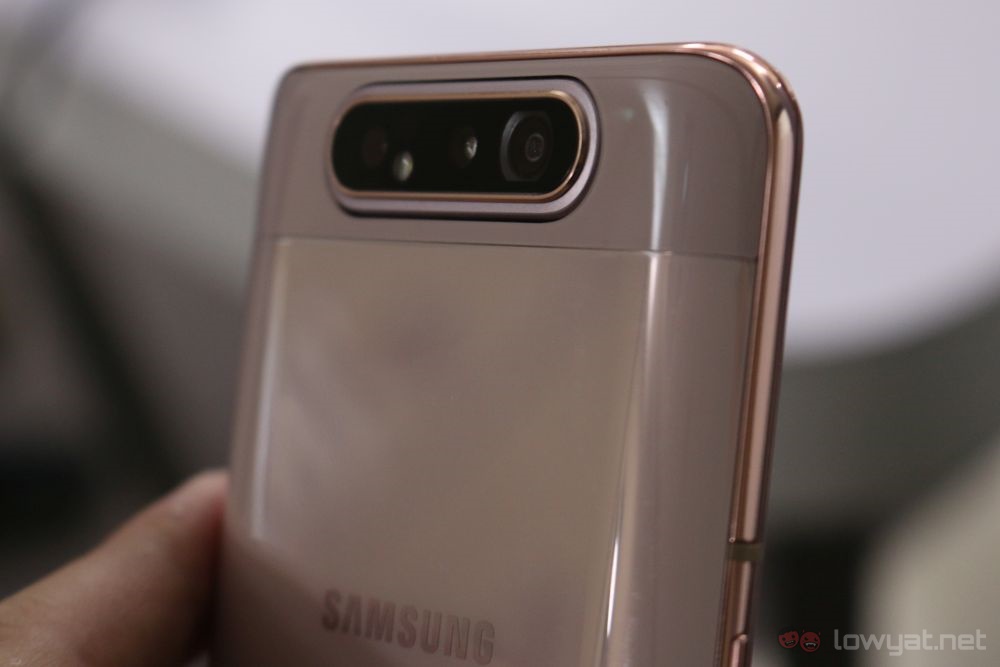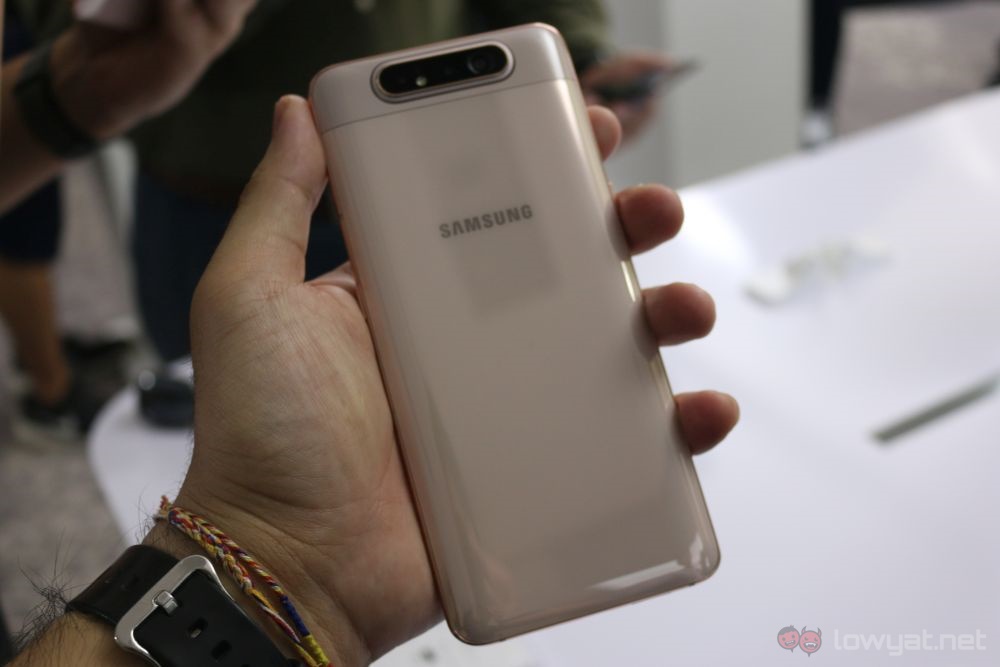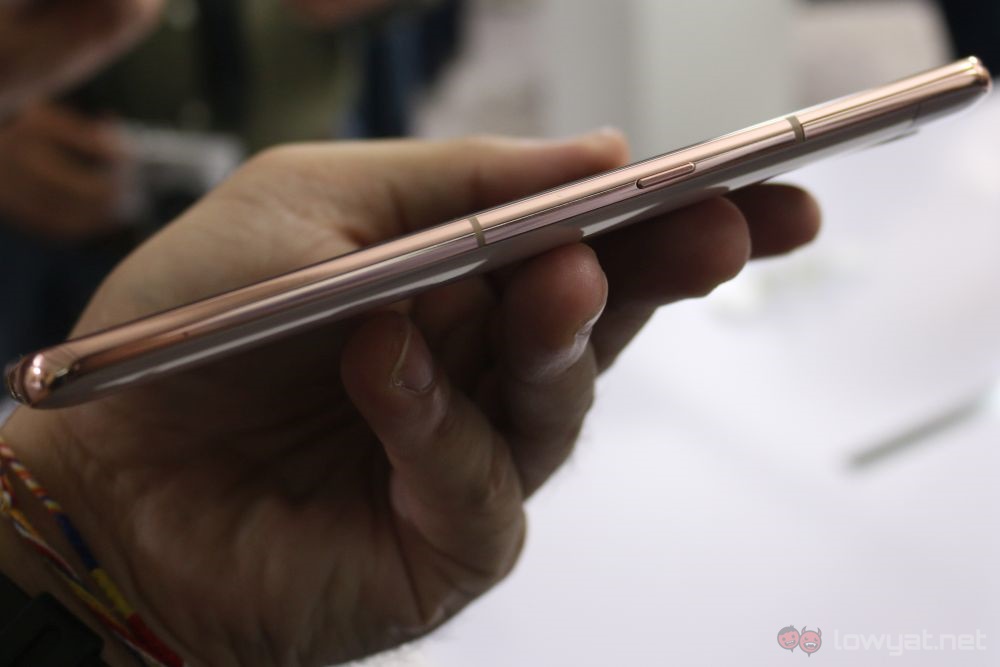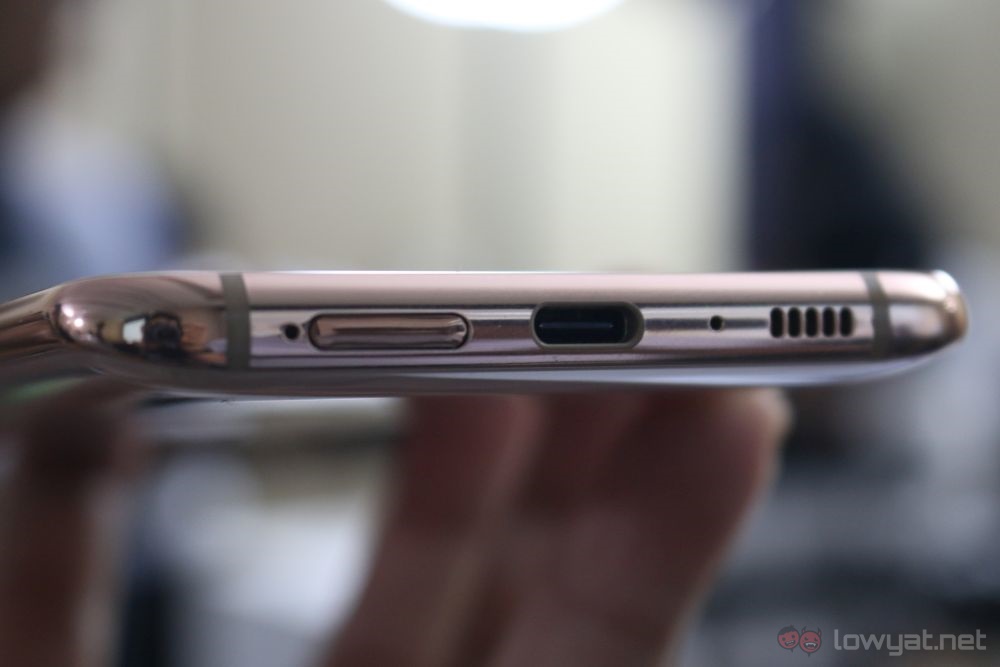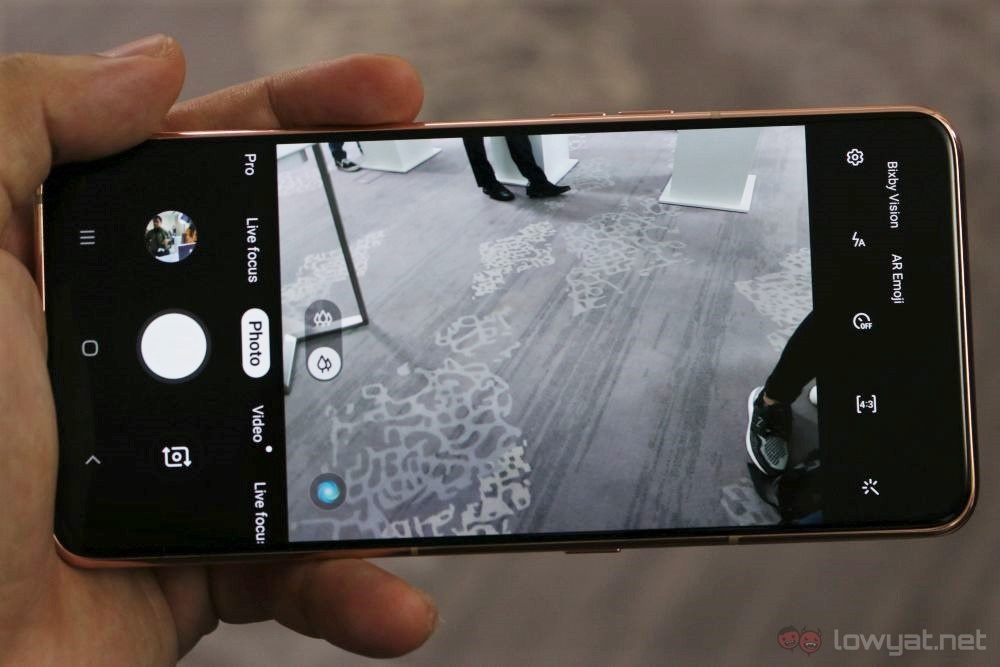There’s no denying that the first thing you’ll notice with the phone is the New Infinity Display. Rather than any notch or cutouts, you get the screen taking up the entirety of the phone’s front. This also means that there’s no earpiece, and voice calls are transmitted via acoustic surface tech – having the screen vibrate to simulate the sounds without a dedicated speaker.
You’ll be wondering, then, where is the front-facing camera. The simple answer to it is; there isn’t one. Instead, the top segment of the phone slides upwards, and a motor swings the main camera around, making them face the front. All this happens when you engage the selfie camera. Because of the motorised mechanism, the phone does feel a little top-heavy. Further, since it’s an entire segment that moves rather than just a small part, it’s possible to force it out, even when the front-facing camera is not engaged. Obviously, forcing the segment down with the selfie mode active leaves the camera prone to damage. More so than other phones with popup cameras, in fact, as the resistance you feel when forcing the camera out of the position is a lot greater.
This also means that you’ll have to be extra vigilant when switching the camera to and from front-facing mode. Any form of resistance will prevent the phone from switching into selfie mode. That includes letting the phone lie flat on the table.
It’s basically the same story when getting the camera to go back to facing the rear. If you’re not careful with where your fingers are, you’ll inadvertently get them pinched by the moving parts. Beyond that, it’s your standard 6.7-inch Full HD+ phone, with buttons where you expect them – the power button sits on the right, while the volume rocker is on the left. The USB-C port is flanked by the mono speaker grille and SIM tray. The latter itself seemingly quite interesting, given its tiny double-sided Nano-SIM tray. Sadly, there’s no microSD slot. Another thing that’s unfortunately missing is the 3.5mm audio jack.
Fancy mechanism aside, the camera experience isn’t as outstanding or outlandish as the design. There are a fair number of modes for you to make use of; colours are accurate, and detail retention is quite good, especially since we had good lighting during our short session with the phone.
All in all, the Samsung Galaxy A80 is a pretty unique phone that uses the same camera setup for the front and back. Thay said, having two motorised parts may be something that nags at the back of your mind for as long as you use the phone.
